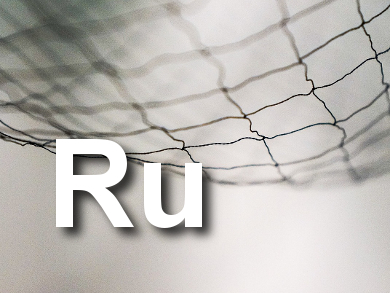Zero-valent metal nanomaterials have been extensively investigated and can be used for catalytic applications. Controlling the shape and size of the nanoparticles, which can be very important for reactivity, often involves the use of surfactants and other additives during synthesis. Methods for the controlled surfactant-free synthesis of nanoparticles, in contrast, are rare.
Subrata Kundu and colleagues, CSIR-Central Electrochemical Research Institute (CECRI), Karaikudi, India, have developed a surfactantless and support-free synthesis of ruthenium(0) nanoparticles, which form interconnected chain-like networks. The particles were produced by the reduction of RuCl3 with NaBH4. Varying the reaction temperature allowed control over the size of the nanoparticles: At higher temperatures, the particles showed a smaller average diameter.
The nanoparticle networks were checked for their electrocatalytic activity in anodic water splitting. They showed an anodic current density of 10 mA/cm2 at an overvoltage of 308 ± 2 mV. The reactivity is probably caused by oxidiation of the surface to RuO2, which then acts as the actual catalyst. The researchers compared these results to surfactant-stabilized ruthenium nanoparticles, which showed lower activity due to the lack of unprotected metal surface.
- Unprotected and Interconnected Ru0 Nano-chain Networks: Advantages of Unprotected Surfaces in Catalysis and Electrocatalysis,
S. Anantharaj, M. Jayachandran, S. Kundu,
Chem. Sci. 2016.
DOI: 10.1039/C5SC04714E




